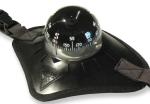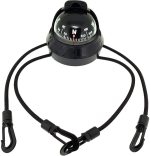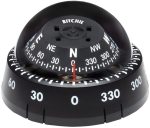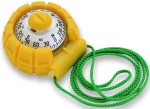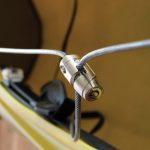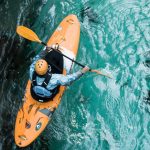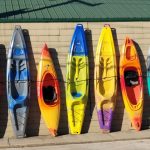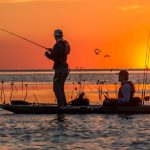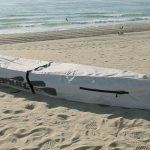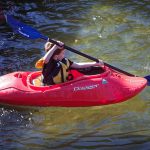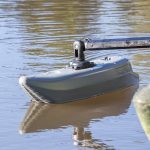Here, we explain how to lock your kayak securely and then look at some great kayak locks to keep your kayak safe.
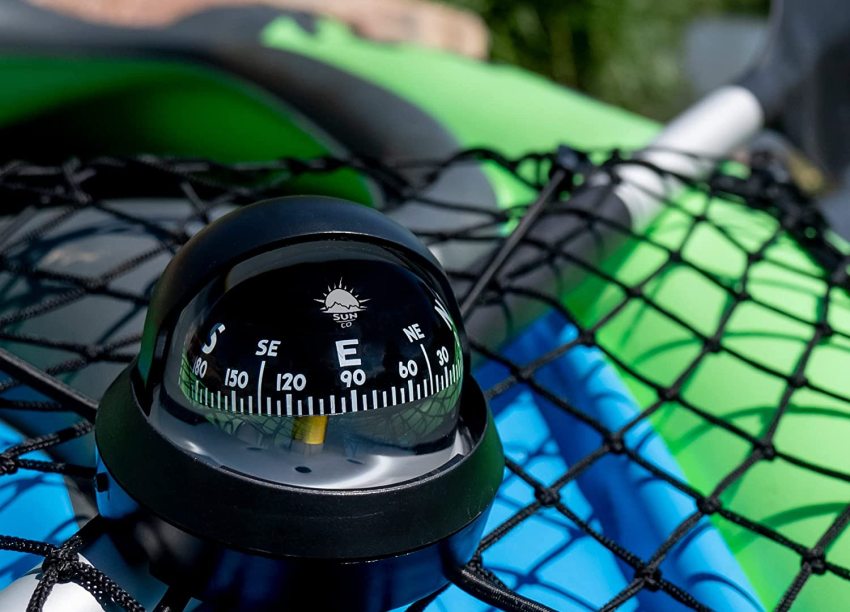
Navigating your sea kayak through rough water or dense fog is an important skill for sea kayakers.
Most sea kayakers will use a GPS navigation device out on the water, but what do you do if it fails?
A compass is still an essential tool for sea kayaking or expeditions. We not only recommend that you get a compass, but that you practice and know how to use it.
When it comes to buying your compass, there are a lot of choices. This article will help you understand the differences between compasses and to make your decision easier. We’ll look at why you need a compass, how to use a compass, and what to look for to get the best kayak compass.
As an affiliate of Amazon and other retailers, we may earn a small commission when you buy via our links, at no additional cost to you. Thank you!
Don’t Have Time for a Full Read? Check Out Our Top Picks:
- Seattle Sports SeaRover Deck Compass
- Sun Company Sea Turtl Kayak Compass
- Kayaker by Ritchie Navigation XP-99
- Brunton Dash Mount Compass
- X-11Y Ritchie Navigation 2-Inch Dial Sport Kayak Compass
Comparison Table: Best Kayak Compass
Best Compasses for Kayakers: Our 2023 Picks
Seattle Sports SeaRover Deck Compass
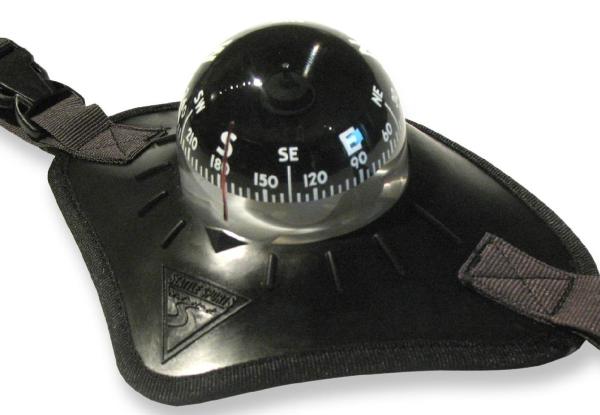
Seattle Sports SeaRover is a simple and easy to read compass that attaches to the top deck of any kayak. The two large clips hold the compass securely on the top deck, while the plastic base prevents the compass from sliding around.
The compass itself is easy to read with 5° increments displayed in clear white on a black card. As with many kayak compasses, this is a direct-reading compass. This means that your heading is shown on the side of the compass closest to you.
Users of these compasses rate them highly for expeditions and for how easy they are to read. It does lack some of the top-end features of other compasses, though. They are also recognized as being fragile and you should always remember to remove it when you finish kayaking.
Pros:
- Easy to read
- Secure and easy mounting
Cons:
- Fragile
Sun Company Sea Turtl Kayak Compass

Sun Company Sea Turtl is quick and easy to fit and remove. The four bungee straps and secure clips make this compass suitable for almost any kayak or even paddleboard. The compass has foam pads on the base to prevent it from sliding around on your top deck.
The readout of the Sea Turtl is clear and easy to use, with 5° increments. Like most kayaking compasses, this model displays your direction on the side you are looking at, making it easier to follow a heading.
The Sea Turtl comes with an adjustable hood. This not only protects it while in storage, but you can adjust it on the water to prevent glare and make it easier to read.
Pros:
- Clear readout
- Adjustable hood for storage and to prevent glare
Cons:
- Bungee cords cannot be adjusted and can be too long for some kayaks
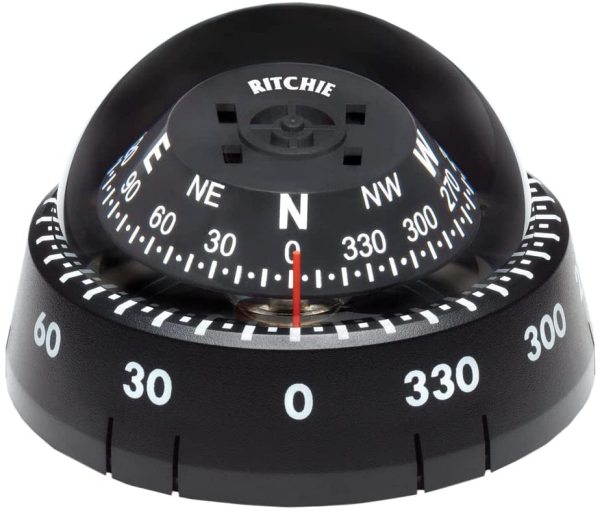
The XP-99 is a direct deck-mounted kayaking compass with a clear readout in 5° increments. The XP-99 uses a composite design that broadens the temperature range that this compass can work in.
This is a quality compass that you can certainly rely on for your expedition. The memory ring is easy to adjust to make sure that you stay on your heading. There is also a lighting kit that can be easily fitted to the XP-99.
Pros:
- Excellent quality
- Clear and easy to use readout
- Memory ring
- Easy to mount
Cons:
- Requires a flat spot on your kayak to mount
Brunton Dash Mount Compass
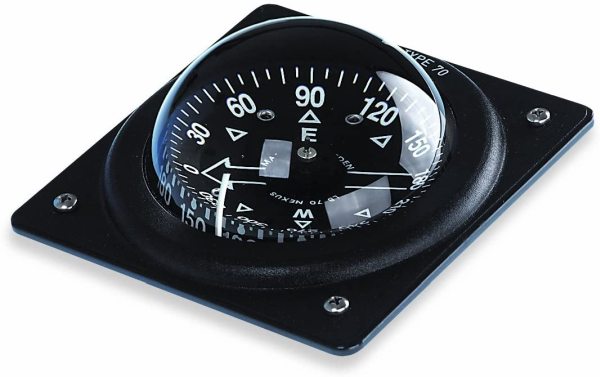
The Brunton Dash Mount compass mounts onto the deck of any sea kayak that has a molded recess. Once fitted, this compass sits flush with the deck, with the perspex dome off the deck. The 5° increments and bearing and back bearing readouts keep a range of tools available to you.
Although not included, it’s recommended that you buy a gasket to secure the fit for this compass. Some users have also suggested that the screws that are provided have sharp ends that can snag on your kit.
Pros:
- Flush mounted compass for a sleek and unobtrusive fit
- Easy to read
- Reciprocal bearing for easy back bearings
Cons:
- Requires a molded recess in the top deck
- The fitting kit has sharp screws and no gasket
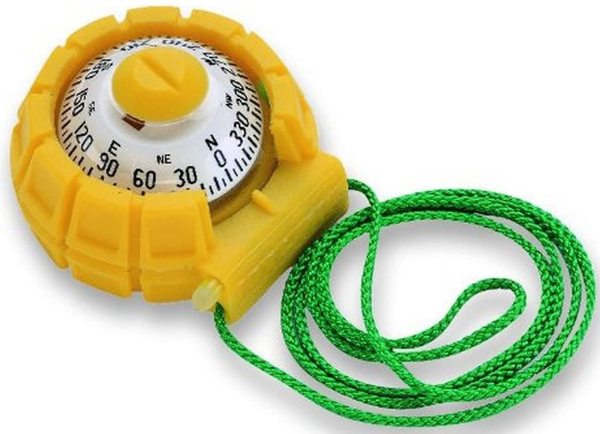
The X-11Y Ritchie Navigation compass is a basic, handheld compass that proves you don’t need to fit your compass to your top deck to navigate. The downside to this setup is that you cannot hold your compass and paddle at the same time. This compass can attach to your deck with screws or velcro but it is designed to be hand-held.
This is a simple compass that doesn’t have any notable features. The black marks at 5° increments are easy enough to read, but not as clear as other compasses on this list, especially at a glance. Like other compasses on this list, the X-11Y has a direct reading, so your heading is displayed to you.
Though the X-11Y doesn’t have any frills, it’s a solid and reliable handheld compass. It comes with light sticks for nighttime navigation. These are fitted onto the compass for illumination.
Pros:
- Reliable handheld compass
- Durable build
- Simple illumination system
Cons:
- The readout is not as clear as other compasses
- Limited attachment options for hands-free paddling
What to look for when buying a compass?
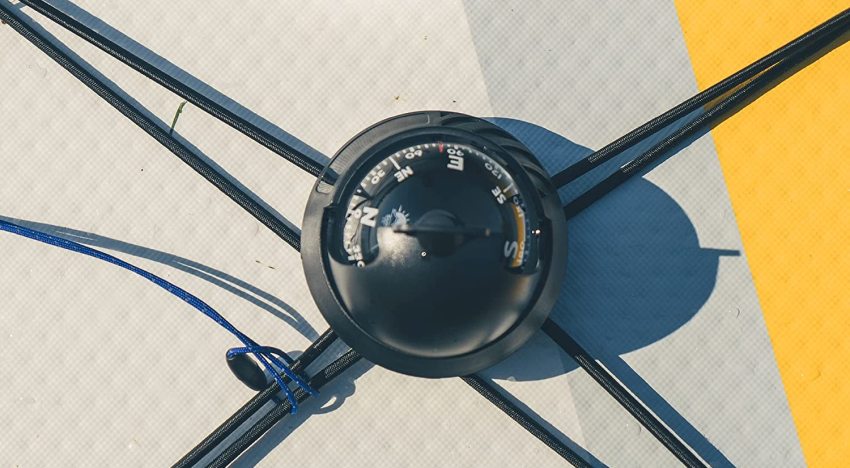
What are some important features of a quality kayak compass?
Robust
Your kayak compass is likely to get a few knocks along the way, whether from your paddle, in a kit bag, or on a trailer. You aren’t likely to go out of your way to break your compass. But you are going to want to know that it can withstand the knocks of use.
A poor-quality compass can form bubbles if it’s knocked. These bubbles will affect the effectiveness of the compass works.
The robustness of a compass is often linked to its size and weight. Though this isn’t an exact science, you will often find the larger compasses are more robust. You may have to choose between weight and durability if you’re planning a long or remote trip.
Attachment
Most sea kayaking compasses attach to the front deck of your kayak. There are a handful of handheld ones, but these are less common. The most important thing, though, is knowing how your compass attaches to your deck.
Permanent
Compasses that attach permanently are usually drilled into the top deck of your kayak. Some kayaks have recesses, or flattened areas, designed to accommodate compasses. Permanent compasses are more secure, but cannot be removed for transport, or shared between kayaks.
Removable
If you regularly change your kayak or don’t use a compass on every outing, you might prefer to use a removable, or temporary compass. These attach onto the deck lines of your kayak and then fit into a recess or tighten into place. If they aren’t fitted properly, temporary compasses may move around or become difficult to read.
Declination adjustment

True north, as displayed on maps, is the direction of the earth’s north pole. Magnetic north is different and is the direction that a compass needle will point. Compass declination accounts for this variance by adjusting the compass as you change between map and magnetic north.
Ignoring declination can cause inaccurate bearings and lead you into trouble. To account for declination, you can either do the math every time you take a bearing, or you can buy a compass with a declination adjustment.
Two things to consider with compass declination. First, it changes over time and depends on location. You should check the current declination of where you are kayaking.
Second, if you are using a chart to navigate, many compass roses have a magnetic north as well as a map north. This means that in your planning, you can account for declination and avoid having to manually decline your compass. Remember to check that your chart is up to date with the current compass variance.
Global or hemisphere specific?
The earth’s magnetic field is not uniform around the globe. As you get closer to each pole, the magnetic field dips, causing the end of a compass to be pulled directly downwards. Compass needles or cards are weighted to prevent this force from unbalancing the compass.
A hemisphere-specific compass is weighted at just one end and won’t be effective in the alternate hemisphere. Global compasses are designed to work anywhere in the world. If you don’t plan to kayak far from home, you are unlikely to need to spend the extra on a global compass.
Memory Ring
When you’ve got a lot going on, remembering the bearing that you’re meant to be paddling on can slip your mind. A memory ring will show you your intended bearing so that you can always recall your direction. If you need to navigate around a feature mid-crossing, you can then get back onto your heading.
How easy is your compass to read?
How easy is your compass to read? What about when it’s raining sideways and you’re navigating through choppy seas?
No matter what features your compass comes with, if it’s too difficult to read, it isn’t going to keep you right. Different compass readouts have various increments, which can make them easier or harder to read or navigate with. Some also come with in-built illumination, or the ability to hook them up to external lighting systems, so you can navigate at night.
Build Quality
How good is your compass? Cheap compasses may not be as accurate as a quality kayaking compass. When you’re in the middle of a crossing, in choppy seas and fading light, you will be grateful that you splashed out a little more on an accurate and quality kayaking compass.
Tips for Using a Nautical Compass
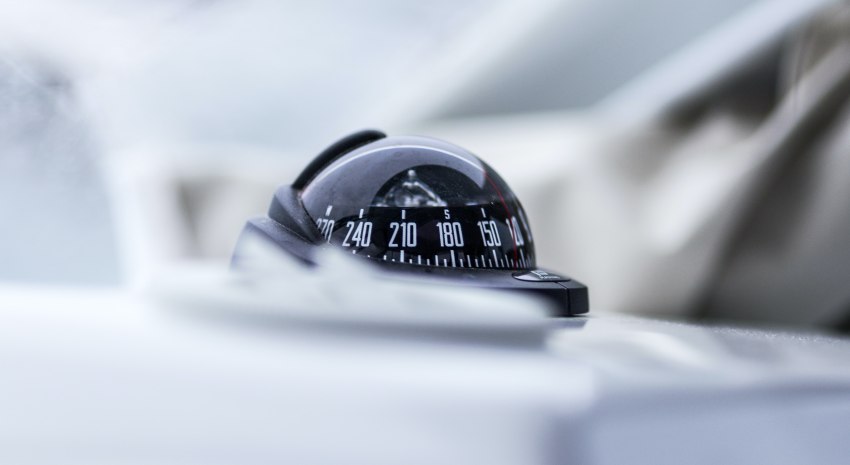
The first thing to do with a compass is to orient your map or chart so that the northings line up with magnetic north. It might seem simple, but even some of the most experienced navigators can get this wrong in challenging conditions.
Knowing how to navigate on a compass bearing is a must-have skill for kayak navigation. In the planning stages of your trip, you should work out your bearings for crossings or challenging sections. These can be written onto your chart directly so that they are there when you need them.
Rounding to the nearest 5° makes it easier to read your compass in choppy seas where the bevel will be rocking slightly. Over short distances, a variation of a degree or two won’t be enough to affect your destination.
On longer crossings, consider aiming off from your target. For example, if you were crossing to a point and chose to aim 5° west of that target area, you will know you then need to turn eastward to finish your crossing. Otherwise, if you miss the point, you may not know which way to turn to find your intended destination.
A compass can also be used to triangulate your position. Triangulation uses at least three reference points, taking a bearing from each to establish your rough position. Three straight lines, from these three points, should intersect close to one another and give you an idea of your location.

